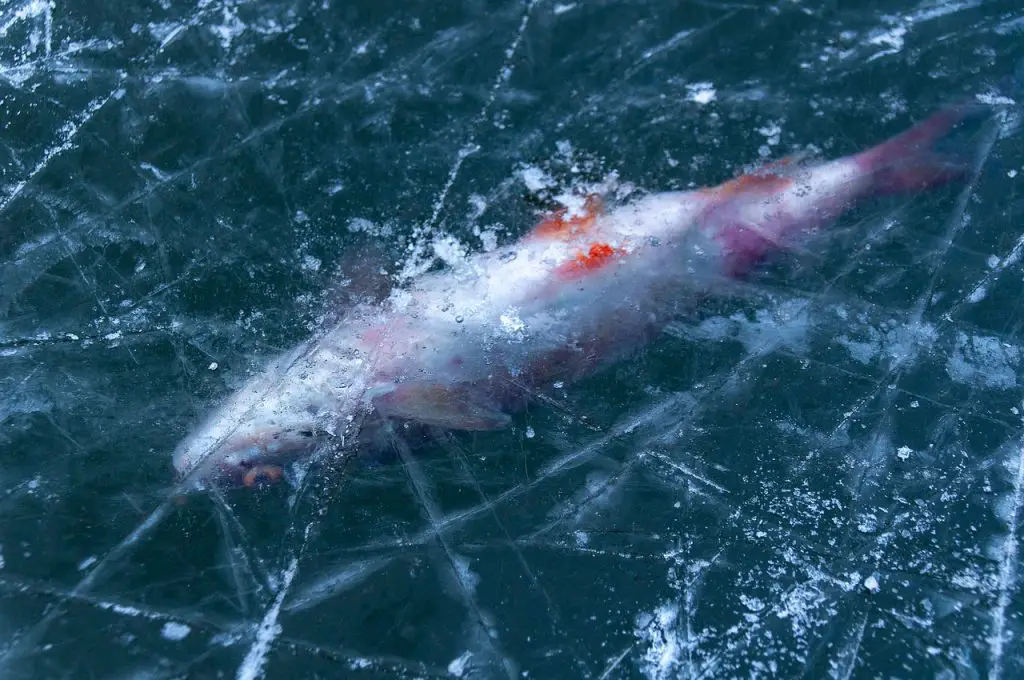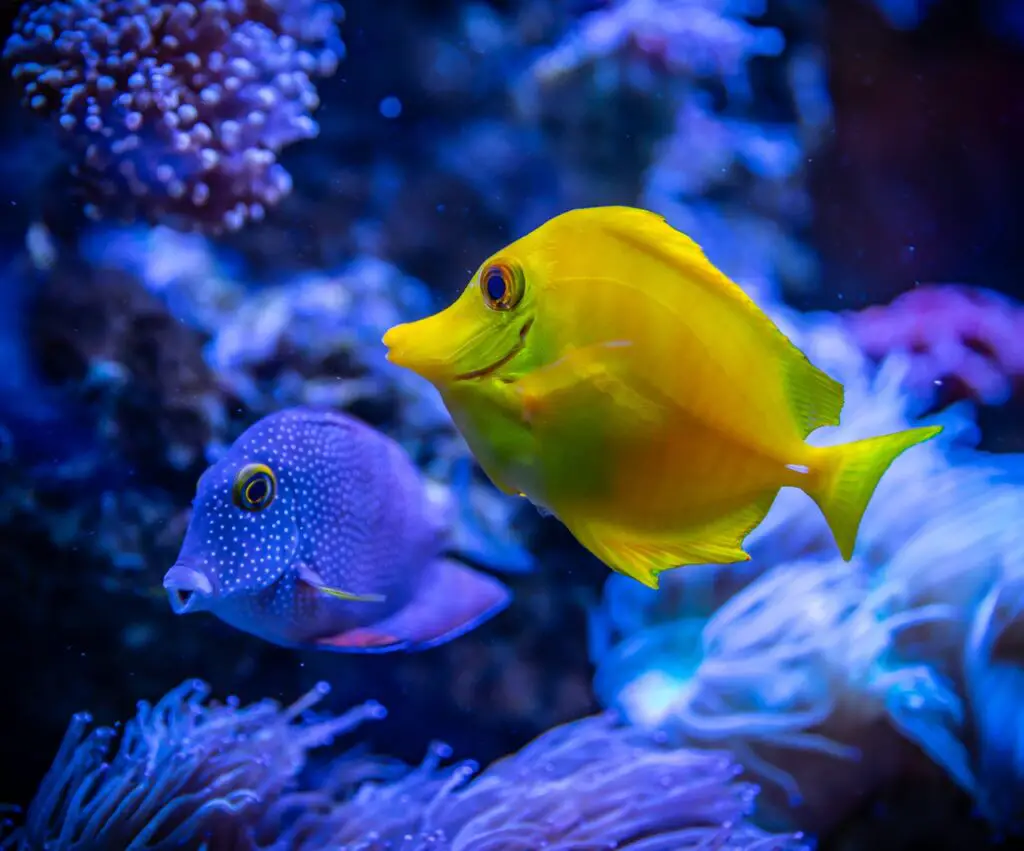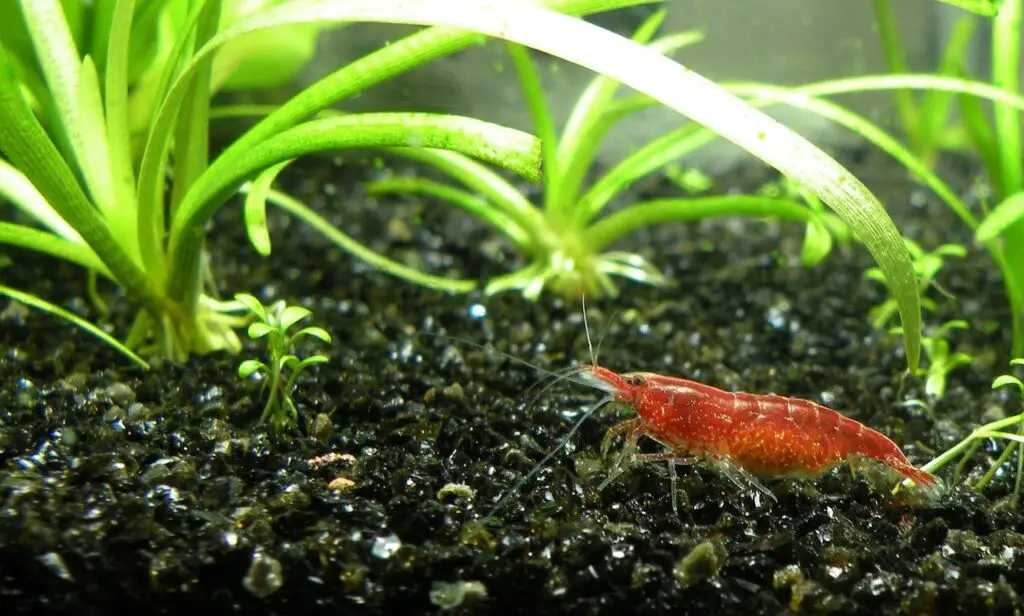Fish are cold-blooded animals, meaning the surrounding environment regulates their body temperature.
This contrasts with warm-blooded animals, which can regulate their body temperature internally. For example, fish can feel temperature changes and adjust their behavior accordingly, but they cannot generate heat internally to raise their body temperature.
Therefore, if their water gets too cold, their body functions can slow down, leading to health problems or even death. However, some fish species have adaptations that allow them to survive in extremely cold water.
Still, it is important to ensure that fish caught in cold water are handled carefully to avoid stressing them and causing harm.
Fish have a preferred water temperature range, and if the water gets too cold or hot, it can adversely affect their health and behavior. So, while fish may not feel the cold the same way humans do, they are still affected by changes in temperature.
This article will explore how fish survive in different temperatures.
We will look at how fish regulate their body temperature, the effects of cold water on their behavior, and how some fish survive in icy conditions.
Fish Body Temperature
Thermoregulation
Fish are ectothermic animals, meaning they cannot regulate their body temperature internally. Instead, their body temperature is determined by the water temperature they live in.
Fish have evolved to survive in various water temperatures, and different species have different preferred temperature ranges. When the water temperature changes, fish must adapt to maintain their body functions and survival.
Fish thermoregulate by changing their behavior and physiology. For example, they may move to different depths or areas of the water to find water with a more suitable temperature.
They may also change their metabolic rate, which affects their energy consumption and growth rate. Some fish can also increase their blood flow to specific areas of their body to warm up or cool down.
Cold-blooded vs. Warm-blooded Fish
Fish can be classified as either cold-blooded or warm-blooded. Cold-blooded fish, also known as poikilothermic fish, have body temperatures that fluctuate with the temperature of the surrounding water.
Most fish species are cold-blooded, including trout, bass, and salmon. Warm-blooded fish, also known as homeothermic fish, can regulate their body temperature internally.
This allows them to maintain a constant body temperature regardless of the temperature of the surrounding water. Examples of warm-blooded fish include tuna, swordfish, and some sharks.
Warm-blooded fish have a higher metabolic rate than cold-blooded fish, which allows them to maintain a constant body temperature.
However, this comes at a cost, as warm-blooded fish require more energy to survive and have a higher oxygen demand. This means they must eat more frequently and have a higher risk of starvation if food is scarce.
Factors Affecting Fish Body Temperature
Water Temperature
Water temperature is a crucial factor in regulating fish’s body temperature.
Fish are ectothermic, so they cannot regulate their body temperature internally.
Instead, they take on the temperature of their surroundings. Different fish species have different preferred temperature ranges, and even a few degrees of difference can sometimes kill them.
Higher water temperatures increase the respiration rates of many fish species, meaning they need more dissolved oxygen than usual.
However, higher temperatures decrease dissolved oxygen’s solubility, decreasing its abundance. Therefore, fish in warmer water may experience oxygen stress.
Depth
The deeper the water, the colder it gets. Therefore, fish living in deeper water will experience colder temperatures than those living in shallower water.
The temperature difference can significantly affect the fish’s metabolism and immune function.
Season
Seasonal changes can have a significant impact on fish body temperature. For example, water temperatures drop in winter, and fish may experience cold shock/stress.
In contrast, water temperatures rise in summer, and fish may experience heat stress.
Fish species respond differently to seasonal changes, and some may migrate to different water bodies to avoid extreme temperatures.
Fish Species
Each fish species has a preferred range of water temperature. For example, some fish species are adapted to living in cold water, while others prefer warmer water.
Therefore, different fish species may experience additional stress levels in response to changes in water temperature.
Fish Adaptations to Cold Water
Antifreeze Proteins
Some fish species have evolved to produce antifreeze proteins that protect their tissues from freezing in cold water. These proteins bind to ice crystals and prevent them from growing, keeping the fish’s tissues from being damaged. Arctic and Antarctic fish, such as the Antarctic toothfish and the Arctic cod, are known for their ability to produce these proteins.
Behavioral Adaptations
Fish have several behavioral adaptations that help them survive in cold water.
Some species, such as salmon, migrate to warmer waters during winter. Other species, such as trout, seek out areas with warmer water temperatures, such as near the bottom of a lake or river.
Another behavioral adaptation is reducing activity levels. For example, fish have slower metabolisms in cold water, so they may become less active to conserve energy.
Some species, such as carp, become dormant during winter, burying themselves in the mud at the bottom of a pond or lake.
Physical Adaptations
Fish possess various physical adaptations that aid them in surviving in cold water. One such adaptation is the presence of a higher concentration of unsaturated fatty acids in their cell membranes.
These fatty acids are more fluid in colder temperatures, allowing the fish’s cells to stay flexible and operational. Additionally, fish with smaller bodies have a higher surface area-to-volume ratio, which enables them to shed heat more rapidly.
Although this may be an asset in warmer waters, it can pose difficulties for the fish to maintain their body temperature in colder temperatures.
Certain species, such as the Arctic char, have adapted to having larger bodies to help them retain heat in icy waters.
Conclusion
So, do fish get cold?
The answer is yes, fish can get cold, but what “cold” means to them depends on their species and environment.
Fish are cold-blooded creatures, which means the surrounding water temperature regulates their body temperature. Therefore, the fish’s body temperature decreases when the water gets cold.
However, fish have developed various adaptations to survive cold temperatures.
For example, some fish can slow their metabolism and become less active, while others can tolerate freezing temperatures and even survive frozen in ice.
It’s important to note that sudden changes in water temperature can harm fish and even lead to their death.
Therefore, it’s crucial to monitor the water temperature in aquariums and bodies of water and make adjustments as necessary to ensure the well-being of fish.
Overall, while fish can get cold, they have evolved to adapt to various temperature ranges and survive in their environments. Therefore, understanding how fish respond to changes in temperature is essential to ensure their health and well-being.



